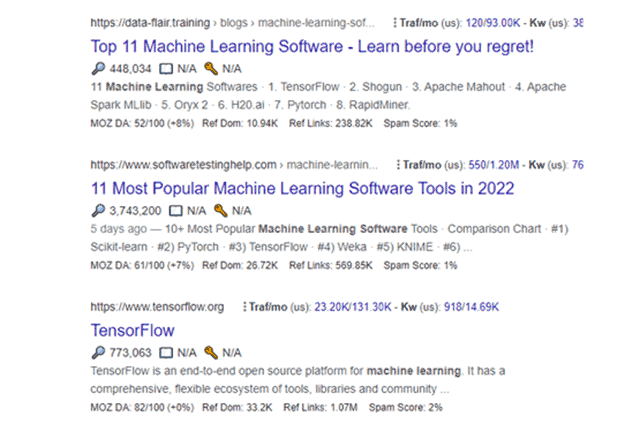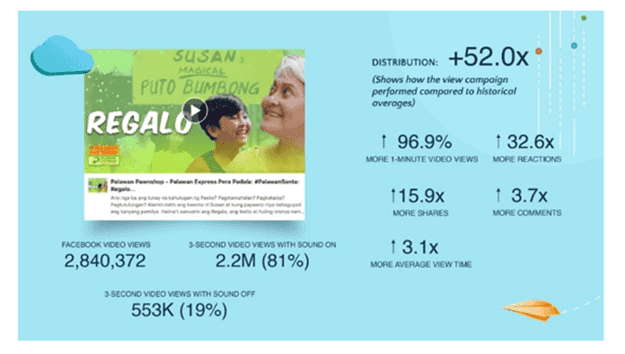Videos have become the dominant content format in today’s digital marketing.
They accounted for 82% of all internet traffic in 2021 and generated leads for 83% of marketers.
Now, say you are a business jumpstarting with video marketing.
You spend all your time and money strategizing eye-catching video content.
Then, invest in an online video editor to produce the best-in-class video.
But after everything, it doesn’t rank in the Google search. It means you fail to reach a large pool of audience.
That brings us to an important question – What is Video SEO? And how to optimize videos for search engines?
What is Video SEO?
Video SEO is search engine optimization of videos to help them rank better.
Google and its subsidiary YouTube are the most popular search engines for videos.
Google accounts for 70% of all internet searches.
And YouTube follows closely by being the world’s second-largest search engine.
Today, YouTube makes up 80% of Google’s video search results.
So, if you know optimizing your video content for these two engines, ranking on the others will require no extra effort.
Video SEO is not the same as regular SEO.
It requires specific techniques and tactics to get indexed and ranked for the relevant keywords. Here are our 8 best video SEO tips to help you get started.
8 Best Practices to Optimize Videos for Search Engines

Start with the Keyword Research
Knowing what people are searching for is the first step toward creating Google-friendly videos.
Keyword research helps you know the most searched keywords that identify with your video.
You may even consider video editing by incorporating the right words.
Additionally, you also get fresh ideas for potential videos.
It is essential to have the appropriate keywords in the video title, meta description, caption, and tags to enable google to crawl your content.
The basic google and youtube search bar can give you a headstart.
In addition, you may want to invest in some good keyword research tools to do the same.
Competitor videos can also provide insights into the keywords that work for them.
For some queries, people prefer videos over other content formats.
A quick Google search will reveal whether videos appear as the top results on the first page or not.
In that case, you can target those keywords for your content as well.

For the keyword, ‘skincare tutorial’ videos surface in the top results. This means people prefer watching videos for this query.
It is essential to have the appropriate keywords in the video title, meta description, caption, and tags to enable google to crawl your content.
For more on this, check out our SEO Keyword Research Tutorial.
Pro tip: Go beyond the most searched keywords with high competition. They are usually used by authority brands and influencers. Hence, very difficult to rank. Instead, identify the ‘long-tail keywords with the greatest conversion potential.
Write Engaging Titles and Smart Video Descriptions
Title and meta description ideally should have the exact match of keywords that users search.
Titles are the first thing that gets noticed by search engines and audiences.
So, your video tiles should have the right and relevant keywords if you aim to rank higher.
Here are some useful, Google-favorite video title SEO strategies that you should consider:
- Keep titles short and objective. 45-47 character long titles tend to bag the top 20 positions in searches.
- Use the exact match of keywords that the user’s search.
- Be creative to arouse the audience’s curiosity to improve click-through rates.
The meta description is the content appearing in search results under the title.
This is a great place to cover the keywords that best fit your video content. You can include a call to action, timestamps of the video, and links to other videos in this section.
But, it is best to keep the description at 155 characters or less.

You can include a call to action, timestamps of the video, and links to other videos in this section.
For more tips on optimizing your content, see our SEO Beginners Tutorial.
Do Not Underestimate the Transcript
Transcribing videos offers dual benefits. First, it makes it easier for the search bots to understand your videos.
Second, it offers an alternative content format for the ones who prefer reading to watching.
Search bots can extract bytes from your videos, including the spoken content.
But, transcripts provide them the additional text for indexation.
This helps them to rank better for the related queries.
You can provide complete word-to-word transcription or important highlights with the targeted keywords of your videos.
Our Words, Characters, Sentence & Paragraph Counter can help you keep track of your transcript length.
Moz’s popular Whiteboard Fridays videos are a classic example of writing great transcriptions.
Provide High-Resolution Thumbnail
Thumbnails (as video or image) greatly influence a person’s decision to click the content.
So, whether your video gets clicked or not largely depends upon the quality and appeal of the thumbnail you create.
You can use online video editors to create perfect thumbnails.
Prefer to have thumbnails with human faces to strike a chord with the audience. Further, make them:
- high-resolution’
- professionally edited
- eye-catching
- illustrative of your video content

Use Structured Data to Create Informational Rich Results
Structured data enables Google and other search engine crawlers to find videos and understand what they are about.
Since search bots can’t decipher the complete video content, some information using schema.org markup goes a long way in serving them.
The essential elements of the structured data include video title, description, duration, thumbnail, transcripts, video content file URLs, and more.
You have the option to feed all this manually or use plugins for the same. You can further validate your schema markup using Google’s Rich Snippet Testing Tool.
After all, videos with eye-catching rich snippets generate more clicks and traffic.
Keep Video the Focus of Your Page
If you have invested enough time in video editing, make sure it gets noticed as the first thing on your page. Place it on the top of the page to make it the focus.
Most people would not take the effort to scroll down.
That means a video far down the page would lose visibility. Also, don’t stuff your page with too many videos. It only confuses the search engines.
They won’t understand which is the most important to be shown in the search queries.
Ensure the Page Content Is Relevant to the Video
A video alone can’t help you rank higher in SERP.
The whole page should have equally relevant and quality content.
Besides, the content has to be cohesive i.e. it should be in line with the central idea/theme of the discussion.
An effective SEO technique is to have your videos embedded in the blog posts to create high-quality content pages.
Learn more about content strategy in our Digital Marketing For Small Business Owners Course.
It adds both to the relevancy and visual appeal of the webpage.
Having quality-rich and related content is one of Google and YouTube’s most important ranking factors.
Creating digressions from the main topic will only hurt your SERP performance.
Analyze Analytics to Make It Better
SEO is not a one-time activity.
It requires constant monitoring and improvements to churn likable content. That’s why setting up analytics is a recommended practice.
Analytics can help create the right content to improve audience retention.
It lets you know what is working and what’s not.
Google and YouTube both provide analytical tools to gauge your video performances.
For more insights on measuring your marketing efforts, see our guide on SEO ROI Calculator.”
The tools give statics on some of the vital elements such as –
Impressions click-through-rates:
How many clicks does a video generate after appearing on a person’s homepage?
Traffic sources:
How and from which sources did the video have visitors
Total views:
The number of views that a video gets over a specified period.
The metrics can give you excellent insights into what’s resonating with your audience.
You can compare the best and the worst performing videos and fine-tune your content accordingly.
Do not mind the extra effort of editing a video online until you get what you desire.

Conclusion
By now, you would have understood the strategies for taking your video SEO to the next level.
But, don’t forget the real purpose of optimization is to improve user experience and provide value to the viewers.
Quality is one of the key ranking factors for Google and YouTube.
So, it is essential to strategize and produce exceptional content by editing a video online.
For more tips on optimizing your online presence, check out our Best SEO Beginners Tutorial For Business Owners.
Then, leverage the video SEO tactics to level up your digital marketing game.